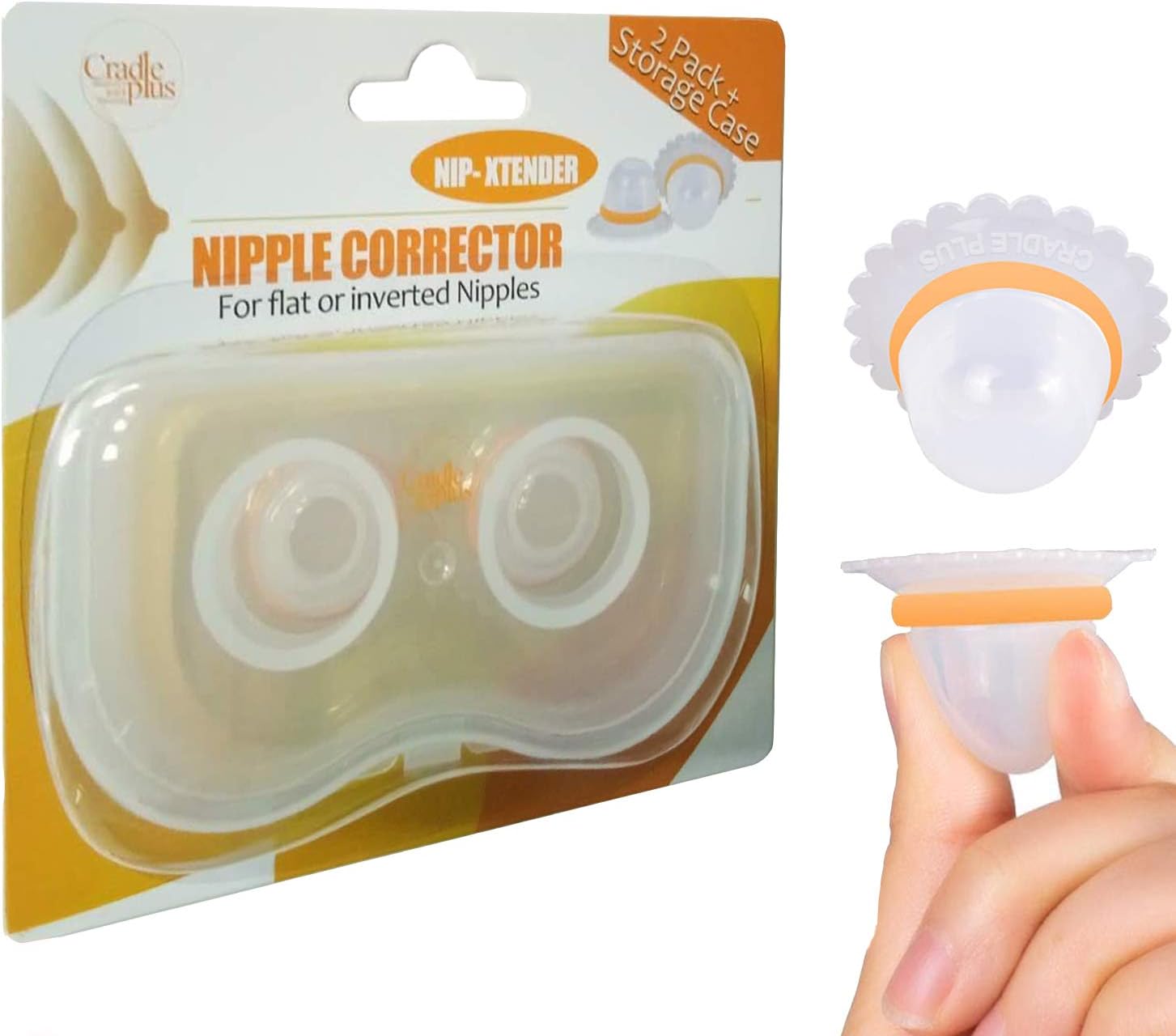
Nip-Xtender by Cradle Plus | Nipple Puller or Extender for Flat,Shy or Inverted Nipples | Nipple Suckers - Pack of 2 with Case | Latch Assist Nipple Enhancer for Breast Feeding Nursing Mothers
FREE Shipping
Nip-Xtender by Cradle Plus | Nipple Puller or Extender for Flat,Shy or Inverted Nipples | Nipple Suckers - Pack of 2 with Case | Latch Assist Nipple Enhancer for Breast Feeding Nursing Mothers
- Brand: Unbranded

Description
These are nipples that are below the skin of the aureola, in most cases, this is a condition you are born with. Sometimes inverted nipples will protrude when they are stimulated. Flat nipples Some plant oils used in shampoos, soaps or lotions have been associated with gynecomastia. These include tea tree or lavender oil. This likely is due to compounds in the oil that may mimic estrogen or affect testosterone. Risk factors Gynecomastia. Endocrine Society. https://www.endocrine.org/patient-engagement/endocrine-library/gynecomastia. Accessed May 17, 2023.
Anti-androgens used to treat conditions such as an enlarged prostate and prostate cancer. Examples of these medicines include flutamide, finasteride (Proscar, Propecia) and spironolactone (Aldactone, Carospir).Nipple inversion is surprisingly common in both men and women and surgery is generally prescribed only if non surgical methods have failed. Some things that can change the body's hormone balance include the following: Natural hormone changes The Noogleberry nipple pump comes in three different sizes small medium and large so it can fit any nipple size easily. Nowadays most of the women who want to increase the size of their nipple use for the surgical procedure because increasing nipples naturally cannot be achieved, especially if your body is fit with the natural reproductive and sexual development process. Women normally want to grow nipple bigger to make their breasts look more attractive and sexy. Although no side effects by nipple enlargements are very rare, who women have enlarged their nipple size would no longer be able to do breastfeeding. This is when nipples start our raised but with age begin to turn inward and change position. Unlike inverted nipples, these won’t protrude even with the cold to arousal.
This condition affects nearly 2% of the population and may be present right from birth or manifest itself during breast development. Although it is medically harmless, women need to be sure before getting their nipples corrected as it may hamper breastfeeding in the future. However, in most cases, an infant can just as easily obtain milk from the mother. The Noogleberry nipple pump kit comes with everything you need to start making your nipples bigger. The kit includes: You’ll experience results right away. Once the procedure is done, you can go home. You can typically resume normal activities except high-intensity exercise. Certain health conditions. These include liver and kidney disease, thyroid disease, Klinefelter syndrome and some tumors. The cost also depends on how many syringes you need. If you only need a small amount of filler in each nipple, your provider might use one syringe for both sides.Buy some fenugreek powder and add a small amount to your regular body lotion to apply to breasts. Very cheap. Nipple injections are unlikely to be covered by health insurance. Since they’re cosmetic treatments, they’re deemed nonessential. Our new Silicone Nipple Enhancers are great for those times when you want your nipple to protrude for that natural, raised look. Adheres securely to skin, so you don't need to wear with a bra. If you find the protrusion too strong, you can always trim/shape to your desired look for a more natural appearance. painful nipples after breast augmentation Can I increase my nipple sensitivity without increasing the size of my breasts? nipple pain and sensitivity Darkening around the nipples during pregnancy? nipple over sensitivity over sensitive nipples during sexplay...help!!! small breasts and big nipples. what can I do about that? don't like nipples to be touched Numbness after Breast Augmentation!! Help!! Painful Nipples Sore nipples help me please how sore should they be? Very sensitive erect nipples 4 days. What could be the cause Sore nipples/white dots on nipples MALE NIPPLES HURTING IN ADOLESCENSE Sore nipples Swollen and tender nipples 19 year old female...no nipples 18 and my nipples are still inside my breast, how do i take them out? I'm wondering what a 14 year old nipples look like? Extra long nipples, what can I do about them im 15 and have lumps under my nipples i tend to get inverted Nipples Erected Nipples after intercourse and before period 12 and have sore and stiff nipples 10 days late. Tender breasts and very sore nipples. Pregnancy? more nipples than usual puffy nipples/ areolas inverted/ flat nipples How to reduce size of my nipples
- Fruugo ID: 258392218-563234582
- EAN: 764486781913
-
Sold by: Fruugo
